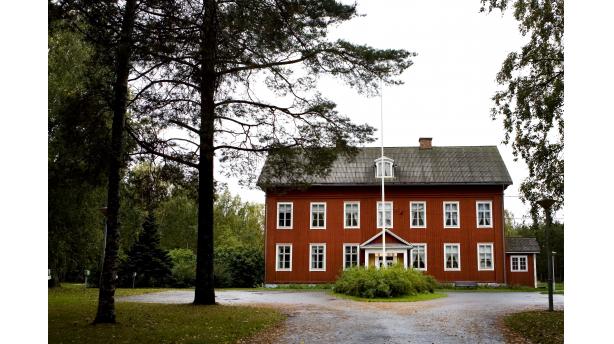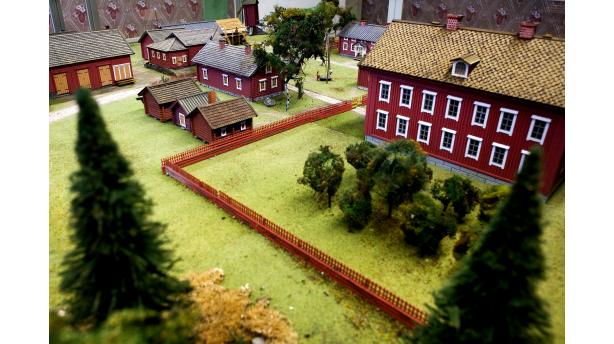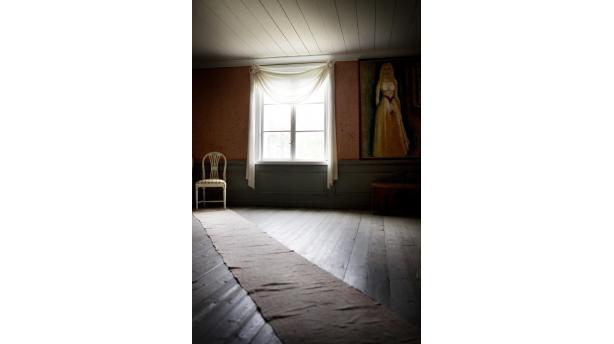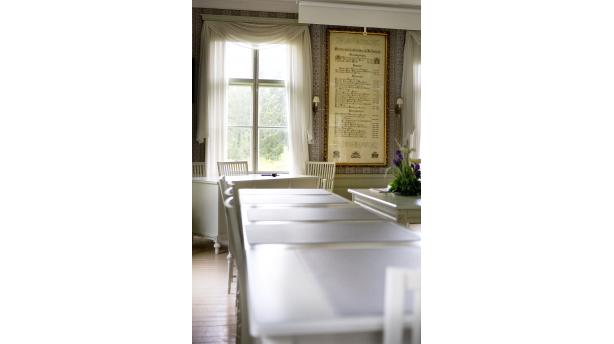Museum A-Ö » Religion and society » Tottesund Mansion
Tottesund Mansion




Did you know...
Finland’s national composer Jean Sibelius was wedded with Aino Järnefelt in the grand hall of Tottesund.
The Tottesund Mansion is one of the few mansions in Ostrobothnia. It has during the centuries served for instance as the residence of a colonel, and nowadays it is a stately memorial for past times. Experience the glamour of manor life in the grand and spacious main building or in the splendour of the garden.
The birch alley leads the visitor to the stately wooden two-storey mansion. The manor house is surrounded by a large garden and a park, which continues into the present-day forest. Earlier it was possible to see the sea from the park. Plenty of gentry have spent their time here.Erstwhile colonel of the Ostrobothnian infantry regiment Gustaf von Numers (later major general) had the current mansion of Tottesund constructed in 1800. The manor was a stately home, and there was a masoned tile stove in every room. The general was both a soldier and a farmer, and he started a park, a garden and a vegetable garden on the estate.
The history of the estate, however, reaches back all the way to the 1660s, when count Claes Tott established a manor estate in Maxmo. There was a turning point in 1733, when the mansion became the residence of a colonel of the Ostrobothnian regiment. A new residential building was built for the first colonel, Gustaf Creutz, in 1738-1740. The house was, however, drafty and cold, and it was later used merely as a wing when the current main building was completed in 1800. Only the grey stone walls and tile vaults of the cellar remain from the 18th century mansion.
The manor was restored in the 1990s. The tile stoves and the elegant wallpapers create an authentic mansion ambiance. On the walls of the large Gladhammar-Wästrum drawing room on the first floor are placed portraits of the great men of the manor, who keep an eye on the events in the drawing room. Escutcheons of noble families embellish the walls and at the same time remind the visitors of the mansion’s many masters or their bailiffs, who lived and farmed the land in Tottesund. The estate represented for the peasants an unattainable dream: a life without shortage of food or other necessities, as well as unfathomable freedom.
Upstairs can be seen a scale model of the Tottesund mansion and its vicinities. In the detailed scale model are depicted the mansion, some outbuildings and a mill, which used to locate on the estate. In the attic of the manor house on the third floor is a furnished chamber, where according to legend the ghost of the house, the White Lady, continues her restless wandering. The Maxmo municipality purchased the manor in 1947. The ballroom can be rented for various events.



